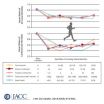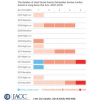(Press-News.org) An international team of researchers led by the University of Arizona has sequenced the complete genome of African rice.
The genetic information will enhance scientists' and agriculturalists' understanding of the growing patterns of African rice, as well as enable the development of new rice varieties that are better able to cope with increasing environmental stressors to help solve global hunger challenges.
The paper, "The genome sequence of African rice (Oryza glaberrima) and evidence for independent domestication," was published online in Nature Genetics on Sunday.
The effort to sequence the African rice genome was led by Rod A. Wing, director of the Arizona Genomics Institute at the UA and the Bud Antle Endowed Chair in the School of Plant Sciences in the UA College of Agriculture and Life Sciences, with a joint appointment in the UA Department of Ecology and Evolutionary Biology.
"Rice feeds half the world, making it the most important food crop," Wing said. "Rice will play a key role in helping to solve what we call the 9 billion-people question."
The 9 billion-people question refers to predictions that the world's population will increase to more than 9 billion people – many of whom will live in areas where access to food is extremely scarce – by the year 2050. The question lies in how to grow enough food to feed the world's population and prevent the host of health, economic and social problems associated with hunger and malnutrition.
Now, with the completely sequenced African rice genome, scientists and agriculturalists can search for ways to cross Asian and African species to develop new varieties of rice with the high-yield traits of Asian rice and the hardiness of African rice.
"African rice is once more at the forefront of cultivation strategies that aim to confront climate change and food availability challenges," said Judith Carney, a professor of geography at the Institute of the Environment and Sustainability at the University of California, Berkeley, and author of "Black Rice." The book describes the historical importance of African rice, which was brought to the United States during the period of transatlantic slavery.
Carney is also a co-author on the Nature Genetics paper, and her book served as one of the inspirations behind sequencing the African rice genome.
"We're merging disciplines to solve the 9 billion-people question," Wing said.
Although it is currently cultivated in only a handful of locations around the world, African rice is hardier and more resistant to environmental stress in West African environments than Asian varieties, Wing said.
African rice already has been crossed with Asian rice to produce new varieties under a group known as NERICA, which stands for New Rice for Africa.
The African rice genome is especially important because many of the genes code for traits that make African rice resistant to environmental stress, such as long periods of drought, high salinity in the soils and flooding.
"Now that we have a precise knowledge of the genome we can identify these traits more easily and move genes more rapidly through conventional breeding methods, or through genetic modification techniques," noted Wing, who is also a member of the UA's BIO5 Institute and holds the Axa Endowed Chair of Genome Biology and Evolutionary Genomics at the International Rice Research Institute. "The idea is to create a super-rice that will be higher yielding but will have less of an environmental impact – such as varieties that require less water, fertilizer and pesticides."
Hardy, high-yield crops will become increasingly vital for human survival as the world faces the environmental effects of climate change and an ever-growing global population, he added.
Wing's research group specializes in developing what geneticists call physical maps, a tool that enables scientists to understand the structure of the genome. His group developed the physical maps for Asian rice and donated it to the Rice Genome Project, making sequencing of that complete genome possible.
Much of the evolutionary analysis of the genome was performed by Muhua Wang, a UA plant sciences doctoral candidate, and by Carlos Machado of the University of Maryland. Yeisoo Yu, a research associate professor in Wing's research group at the Arizona Genomics Institute, led the sequencing effort.
In analyzing the 33,000 genes that make up the African rice genome, the researchers discovered that during the process of domestication, Africans and Asians independently selected for many of the same genetic traits in the two species, such as higher nutrition and traits that make harvesting the crop easier.
Additionally, the sequenced genome helps resolve questions about whether African rice originally was domesticated in one region or in several locations across Africa. By comparing the genome with what is known about the genetic structure of wild varieties, Wing and his team found that it's most similar to a population of wild rice species found in one location along the Niger River in Mali. "Our data supports the hypothesis that the domestication of African rice was centric in this region of Africa," Wing said.
From 1998 to 2005, Wing led the U.S. effort to help sequence the genome of Asian rice, which is the only other domesticated rice species. Those results were published in the journal Nature in 2005, and have since enabled the discovery of hundreds of agriculturally important genes, including genes that code for faster breeding cycles and the ability for the plant to survive for up to two weeks underwater during periods of flooding.
Wing's research group is now focusing on sequencing and analyzing the genomes of the wild relatives of African and Asian rice. "By understanding the entire genus at a genome level we have a whole new pool of genetic variation that can be used to combat pests and plant pathogens," Wing explained.
One example, he said, would be adding disease resistance genes from all of the wild rice varieties to a species of cultivated rice, creating a new super-crop that is resistant to diseases and pests.
Wing is also working with Quifa Zhang from Huazhong Agricultural University in Wuhan, China, to create a set of super-crop science and technology centers around the world, where focused and coordinated efforts could help solve the 9 billion-people question. "We really only have about 25 years to solve this problem, and if we're always competing with each other it's not going to work," he said.
"After decades of promoting high-yielding Asian varieties, the emphasis now is on developing types that combine the former's higher yields with glaberrima's tolerance of environmental stress," Carney noted.
INFORMATION:
In November, Wing and his collaborators will celebrate the 10th anniversary of the completion of the Asian rice genome and the new completion of the African rice genome at the 12th International Symposium on Rice Functional Genomics, a conference that will be held in Tucson, Arizona.
Sequencing of the African rice genome was made possible by National Science Foundation grants # 0321678, #0638541, #0822284 and #1026200 to the Oryza Map Alignment and Oryza Genome Evolution Projects.
Generating a genome to feed the world: UA-led team sequences African rice
An international team of scientists led by the UA has sequenced the genome of African rice
2014-07-29
ELSE PRESS RELEASES FROM THIS DATE:
Research letter examines pacemaker use in patients with cognitive impairment
2014-07-28
Dr. Nicole R. Fowler and her fellow reserachers have found that patients with dementia were more likely to receive a pacemaker then patients without cognitive impairment.
Older adults with mild cognitive impairment (MCI) and dementia can have co-existing cardiac illnesses and that makes them eligible for therapy with devices to correct rhythm abnormalities. But the risks and benefits need to be weighed carefully with patients, families and clinicians.
The authors examined data from the National Alzheimer Coordinating Center Uniform Data Set gathered from 33 Alzheimer ...
Electronic screening tool to triage teenagers and risk of substance misuse
2014-07-28
Bottom Line: An electronic screening tool that starts with a single question to assess the frequency of substance misuse appears to be an easy way to screen teenagers who visited a physician for routine medical care.
Author: Sharon Levy, M.D., M.P.H., of Boston Children's Hospital, and colleagues.
Background: Substance use can cause illness and death in adolescents. Screening adolescents and intervening if there is substance use can reduce the burden of addiction. The American Academy of Pediatrics and other professional organizations recommend that primary care physicians ...
Dementia patients more likely to get implanted pacemakers, says Pitt study
2014-07-28
PITTSBURGH, July 28, 2014 -- People with dementia are more likely to get implanted pacemakers for heart rhythm irregularities, such as atrial fibrillation, than people who don't have cognitive difficulties, according to researchers at the University of Pittsburgh School of Medicine. In a research letter published online today in JAMA Internal Medicine, the researchers noted the finding runs counter to expectations that less aggressive interventions are the norm for patients with the incurable and disabling illness.
To look at the relationships between cognitive status ...
Non-endoscopic migraine surgery provides significant symptom relief
2014-07-28
A revised version of a surgical procedure to treat severe chronic migraine headaches led to significant symptom relief more than 90 percent of the time in patients treated at Massachusetts General Hospital (MGH). Physicians from the MGH Division of Plastic and Reconstructive Surgery report that more than half of 35 patients treated with the non-endoscopic procedure – all of whom had headaches associated with compression of craniofacial nerves – reported complete symptom relief a year later. The team's paper has received advance online publication in the journal Plastic ...
Gender disparities in cognition will not diminish
2014-07-28
The study, published in the Proceedings of the National Academy of Science, investigated the extent to which improvements in living conditions and educational opportunities over a person's life affect cognitive abilities and their implications for men and women.
"Our results show that there is no reason to expect all cognitive gender differences will diminish," says Daniela Weber, IIASA researcher and lead author of the study. "However, the findings from this study suggest that if women and men had equal levels of education, then we should expect a female advantage in ...
Running reduces risk of death regardless of duration, speed
2014-07-28
Running for only a few minutes a day or at slow speeds may significantly reduce a person's risk of death from cardiovascular disease compared to someone who does not run, according to a study published today in the Journal of the American College of Cardiology.
Exercise is well-established as way to prevent heart disease and it is component of an overall healthy life, but it is unclear whether there are health benefits below the level of 75 minutes per week of vigorous-intensity activity, such as running, recommended by the U.S. government and World Health Organization.
Researchers ...
Endurance runners more likely to die of heat stroke than heart condition
2014-07-28
Heat stroke is 10 times more likely than cardiac events to be life-threatening for runners during endurance races in warm climates, according to a study published today in the Journal of the American College of Cardiology. The authors noted the findings may play a role in the ongoing debate over pre-participation ECG screenings for preventing sudden death in athletes by offering a new perspective on the greatest health risk for runners.
Two of the most recognized causes of sudden death during an endurance race are arrhythmic death, sudden death usually caused by undetected ...
Learning the smell of fear: Mothers teach babies their own fears via odor, research finds
2014-07-28
ANN ARBOR, Mich. — Babies can learn what to fear in the first days of life just by smelling the odor of their distressed mothers, new research suggests. And not just "natural" fears: If a mother experienced something before pregnancy that made her fear something specific, her baby will quickly learn to fear it too -- through the odor she gives off when she feels fear.
In the first direct observation of this kind of fear transmission, a team of University of Michigan Medical School and New York University studied mother rats who had learned to fear the smell of peppermint ...
New study confirms water vapor as global warming amplifier
2014-07-28
MIAMI – A new study from scientists at the University of Miami Rosenstiel School of Marine and Atmospheric Science and colleagues confirms rising levels of water vapor in the upper troposphere – a key amplifier of global warming – will intensify climate change impacts over the next decades. The new study is the first to show that increased water vapor concentrations in the atmosphere are a direct result of human activities.
"The study is the first to confirm that human activities have increased water vapor in the upper troposphere," said Brian Soden, professor of atmospheric ...
Impact of Deepwater Horizon oil spill on coral is deeper and broader than predicted
2014-07-28
A new discovery of two additional coral communities showing signs of damage from the Deepwater Horizon oil spill expands the impact footprint of the 2010 spill in the Gulf of Mexico. The discovery was made by a team led by Charles Fisher, professor of biology at Penn State University. A paper describing this work and additional impacts of human activity on corals in the Gulf of Mexico will be published during the last week of July 2014 in the online Early Edition of the journal Proceedings of the National Academy of Sciences.
"The footprint of the impact of the spill ...
LAST 30 PRESS RELEASES:
Advanced nuclear magnetic resonance technique developed to reveal precise structural and dynamical details in zeolites
Advancing performance assessment of a spectral beam splitting hybrid PV/T system with water-based SiO2 nanofluid
Researchers realize target protein stability analysis by time-resolved ultraviolet photodissociation mass spectrometry
Oxygen vacancies mediated ultrathin Bi4O5Br2 nanosheets as efficient piezocatalyst for synthesis of H2O2 from pure water
Warming and exogenous organic matter input affected temperature sensitivity and microbial carbon use efficiency of agricultural soil respiration on the Qinghai-Tibet Plateau
Eco-friendly glue designed by Cal Poly, Geisys Ventures team earns industry 'Innovation Award'
From dreams to reality: unveiling the ideal in situ construction method for lunar habitats and paving the way to Moon colonization
From theory to practice: Study demonstrates high CO2 storage efficiency in shale reservoirs using fracturing technology
What women want: Female experiences to manage pelvic pain
Study finds ChatGPT shows promise as medication management tool, could help improve geriatric health care
Heart failure, not stroke is the most common complication of atrial fibrillation
Antipsychotics for dementia linked to more harms than previously acknowledged
Health improvements occurred worldwide since 2010 despite COVID-19 pandemic, but progress was uneven
Mind the gender gap – Met police least trusted by women
Surrey engineers help Mauritius spot illegal fishing from space
Opioid dependence remains high but stable in Scotland, new surveillance report finds
Protecting brain cells with cannabinol
Calorie restriction study reveals complexities in how diet impacts aging
Atom-by-atom: Imaging structural transformations in 2D materials
How 3D printers can give robots a soft touch
Rice alumna wins prestigious merit-based fellowship for new Americans
International group runs simulations capable of describing South America's climate with unprecedented accuracy
Researchers find that accelerated aging biology in the placenta contributes to a rare form of pregnancy-related heart failure
Vibrations of granular materials: an everyday scientific mystery
UW–Madison biochemist wins prestigious forestry prize for discoveries that support sustainable energy and product innovations
New SPECT/CT technique shows impressive biomarker identification, offers increased access for prostate cancer patients
Study identifies new metric for diagnosing autism
Researchers create new AI pipeline for identifying molecular interactions
Clearing the air: Wind farms more land efficient than previously thought
Fracking the future: how Congolese oil extraction has shaped its history and its fate
[Press-News.org] Generating a genome to feed the world: UA-led team sequences African riceAn international team of scientists led by the UA has sequenced the genome of African rice





